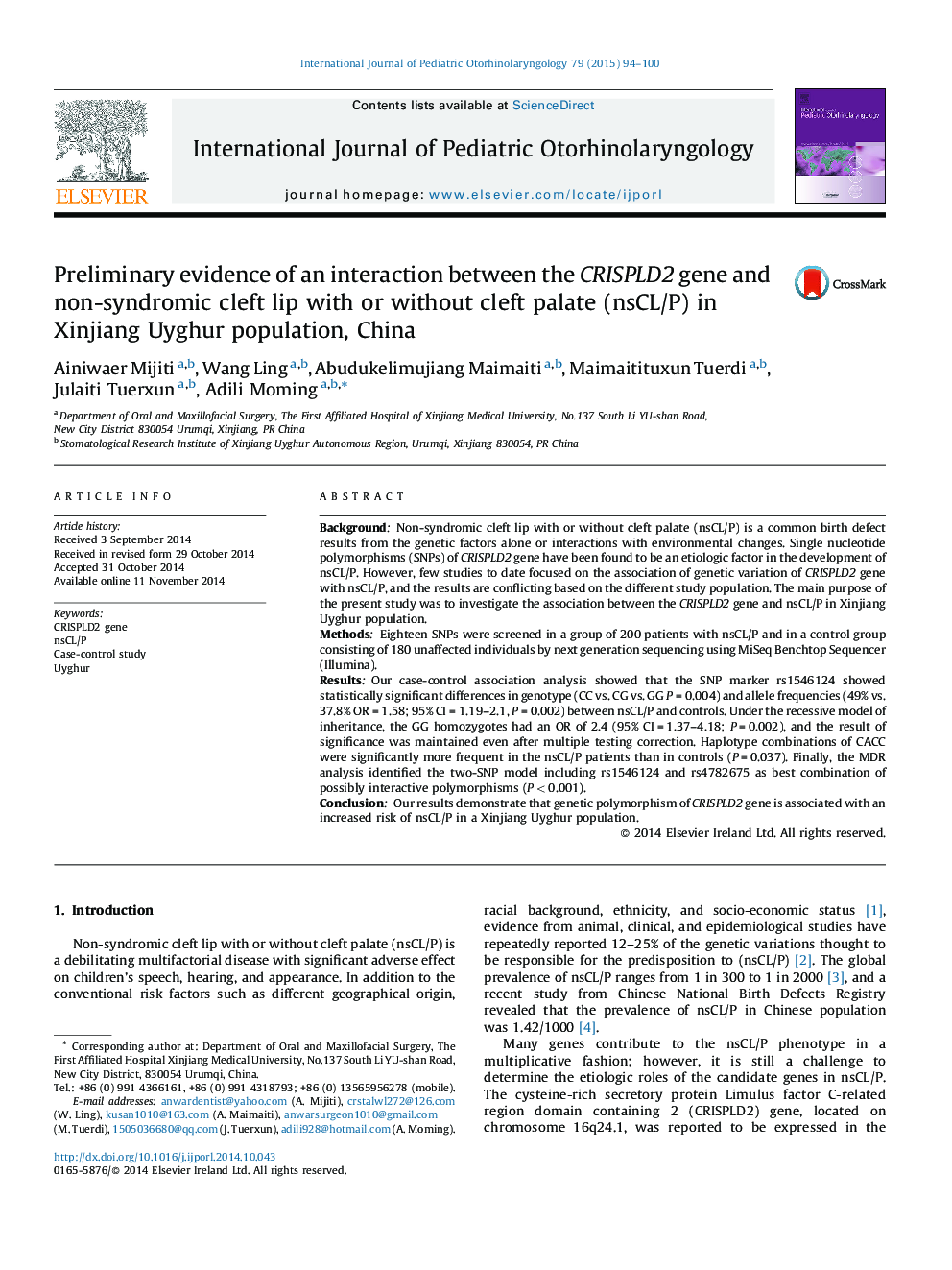| Article ID | Journal | Published Year | Pages | File Type |
|---|---|---|---|---|
| 4112030 | International Journal of Pediatric Otorhinolaryngology | 2015 | 7 Pages |
BackgroundNon-syndromic cleft lip with or without cleft palate (nsCL/P) is a common birth defect results from the genetic factors alone or interactions with environmental changes. Single nucleotide polymorphisms (SNPs) of CRISPLD2 gene have been found to be an etiologic factor in the development of nsCL/P. However, few studies to date focused on the association of genetic variation of CRISPLD2 gene with nsCL/P, and the results are conflicting based on the different study population. The main purpose of the present study was to investigate the association between the CRISPLD2 gene and nsCL/P in Xinjiang Uyghur population.MethodsEighteen SNPs were screened in a group of 200 patients with nsCL/P and in a control group consisting of 180 unaffected individuals by next generation sequencing using MiSeq Benchtop Sequencer (Illumina).ResultsOur case-control association analysis showed that the SNP marker rs1546124 showed statistically significant differences in genotype (CC vs. CG vs. GG P = 0.004) and allele frequencies (49% vs. 37.8% OR = 1.58; 95% CI = 1.19–2.1, P = 0.002) between nsCL/P and controls. Under the recessive model of inheritance, the GG homozygotes had an OR of 2.4 (95% CI = 1.37–4.18; P = 0.002), and the result of significance was maintained even after multiple testing correction. Haplotype combinations of CACC were significantly more frequent in the nsCL/P patients than in controls (P = 0.037). Finally, the MDR analysis identified the two-SNP model including rs1546124 and rs4782675 as best combination of possibly interactive polymorphisms (P < 0.001).ConclusionOur results demonstrate that genetic polymorphism of CRISPLD2 gene is associated with an increased risk of nsCL/P in a Xinjiang Uyghur population.
